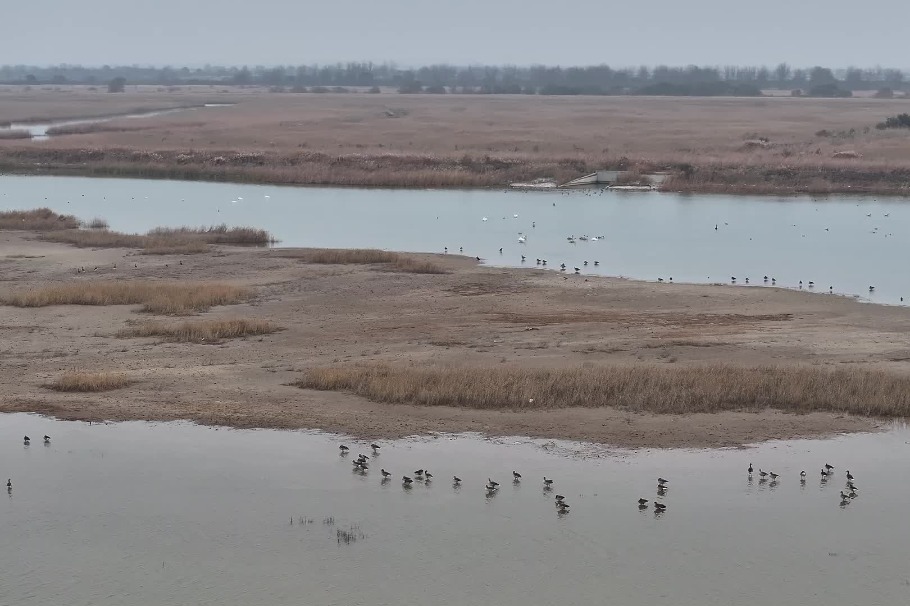Low-altitude economy given all-clear for takeoff


The central government has prioritized the low-altitude economy in its development and investment agenda, in the hope that the sector can become a new engine for economic growth.
To give wings to businesses involved in the low-altitude economy, there are a couple of measures the government could use, according to Wu Ximing, a senior rotorcraft designer and vice-president of the Chinese Aeronautical Establishment in Beijing.
"First, the government could set up a national project, with specific funding, to push forward the research and development of low-altitude aircraft and relevant equipment. It could announce that low-altitude hardware is strategically important and encourage enterprises to develop such equipment and crucial technologies. The result of these efforts should be new low-altitude hardware that is advanced, smart and green, and industrial and supply chains that are secure and reliable," he said.

Major low-altitude hardware can include small fixed-wing planes, helicopters and drones. Many industry insiders also believe that eVTOL (electric vertical takeoff and landing) aircraft will dominate the business in the future, according to Wu.
He added authorities could make a set of industry standards and codes, based on operational experience and the market demand of low-altitude businesses, to regulate the research and development of technologies as well as the manufacturing and use of hardware.
"The government should use integrated planning when it comes to the low-altitude economy's infrastructure, general aviation and local cities' construction projects," the designer said. "Low-altitude activities should be taken into account in the building of civil aviation and other public infrastructure."
The government could also use favorable policies to attract State-owned companies in space, electronics, telecommunication and other industries to take advantage of their expertise to tap opportunities in the low-altitude economy.
Wu urged the government to organize aircraft designers, aviation researchers and representatives from various industries to study how low-altitude activities can complement other fields like agriculture, tourism, medical services and logistics.
"The low-altitude economy can become some kind of motivator and catalyst to other trades by creating new business patterns and needs," he noted, adding that trial projects could be launched in provinces such as Sichuan and Shaanxi that already have experience in running low-altitude activities.
Wu's organization is a major research and planning body of the State-owned conglomerate Aviation Industry Corp of China, the nation's dominant aircraft maker.
He made the remarks on the sidelines of the second session of the 14th National Committee of the Chinese People's Political Consultative Conference, which concluded in Beijing on Sunday. He is a member of the CPPCC National Committee, the top political advisory body in China.
The term "low-altitude economy" has become a buzzword among China's economic planners in the past few years. Though there has yet to be an official definition, economists have generally agreed that it refers to a spectrum of business activities occurring within low-altitude airspace, commonly defined as airspace up to 1,000 meters above the ground. It involves manned and unmanned civilian aircraft activities, such as passenger transportation, air tourism and cargo delivery, and also covers related hardware manufacture, maintenance and integrated services.
Hardware used in low-altitude activities involves a wide range of businesses, including materials, machinery, fuel and communications, and also relates to a number of emerging sectors such as big data and artificial intelligence.
The low-altitude economy can help to create a great deal of high-value jobs, bolster innovation in science and technology, and inject new momentum into the national economy, according to Wu Peixin, an aviation industry analyst in Beijing.
The Chinese government has listed the low-altitude economy as a strategic emerging sector, alongside two other significant industries: biomanufacturing and commercial spaceflight.
The size of China's low-altitude economy as of the end of last year was estimated at more than 500 billion yuan ($70 billion), with its scale expected to reach 2 trillion yuan by 2030, according to the Civil Aviation Administration of China.
A low-altitude economy white paper published in November by the International Digital Economy Academy, a research organization in Shenzhen, Guangdong province, said the low-altitude economy has enormous growth potential and has become a new arena contested by major countries around the world. It could contribute at least 3 trillion yuan worth of business value to China's economy by 2025, it forecast.
- Powering up China's 'flying shark' J-15 carrier-based fighters
- What a Joy! Everyone becomes an artist at Shanghai Citizen Night School
- The China-Europe freight train service has achieved 100,000 trains
- China, Peru to deepen comprehensive strategic partnership
- China completes manned deep-dive missions in 8 major hadal trenches
- Xi says China ready to build new land-sea corridor between China, Latin America




































